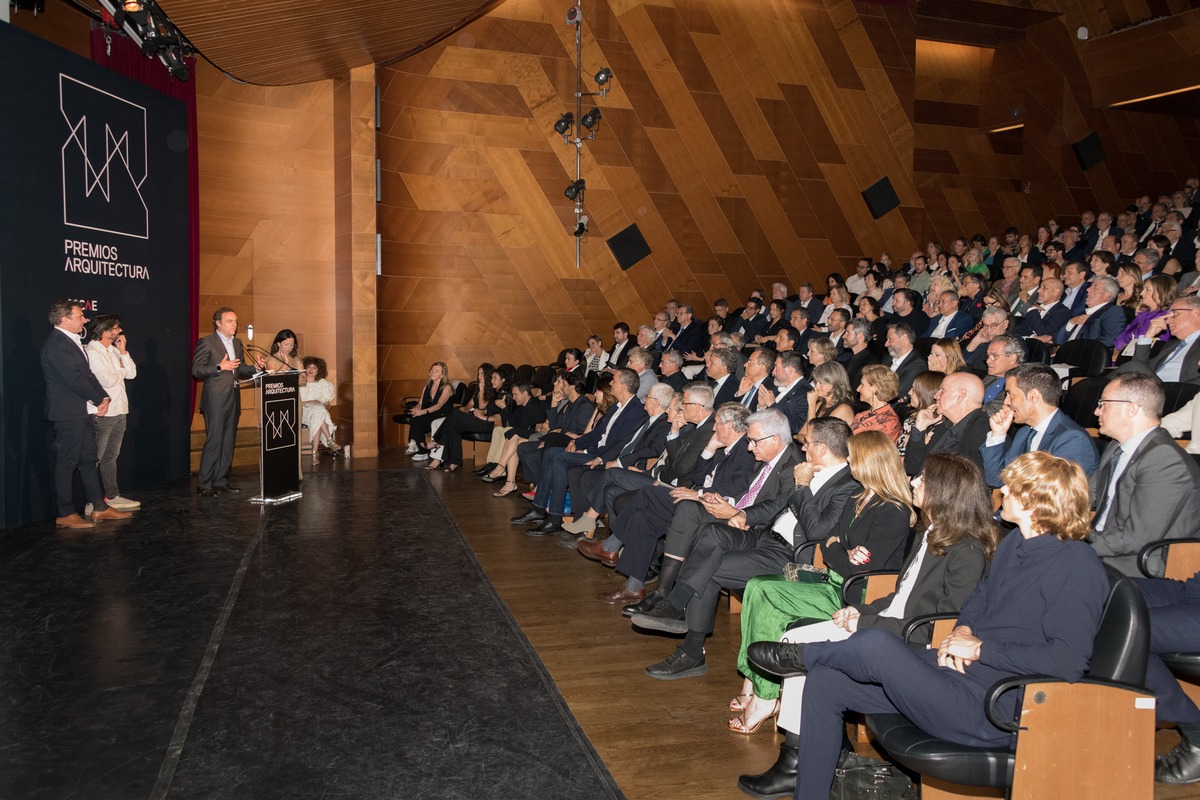The Antoni Gaudí retrospective invites us to explore the story, beginnings, development and legacy of this architectural genius in the city of Barcelona. Gaudí, born in 1852, left an indelible mark on the world of architecture thanks to his unique and innovative style. His influence is still evident today in the many works that embellish the city of Barcelona.
Gaudí began his education at the Barcelona School of Architecture. There, although he acquired classical knowledge, he soon stood out with his daring and unconventional approach.
His work is characterised by the way he combines curvilinear forms. Similarly, his use of natural elements and attention to detail is apparent in every aspect of his constructions. In addition, Gaudí pioneered the use of new materials and construction techniques. As such he was able to materialise his ideas in a truly surprising way. he was initially influenced by Catalan modernism and the neo-Gothic. However, he quickly developed his own style that set him apart from the established conventions.
Gaudí’s distinctive style is characterised by the use of innovative materials and large scale constructions. He is also known for an organic aesthetic that seeks to integrate in the natural surroundings. His buildings are true architectural works of art that transcend traditional limits.
Parc Güell: The architectural magic of Gaudí in an iconic space
One of the most noteworthy examples of Gaudí’s work is Parc Güell. This unique space, in the hills of Barcelona, combines natural and architectural elements in perfect harmony. The undulating, colourful benches and the stone arches and columns are striking. And their decorative mosaics create a magical landscape that transports visitors to a fantasy world. Parc Güell is a clear example of Gaudi’s creative genius and his ability to merge architecture with nature.
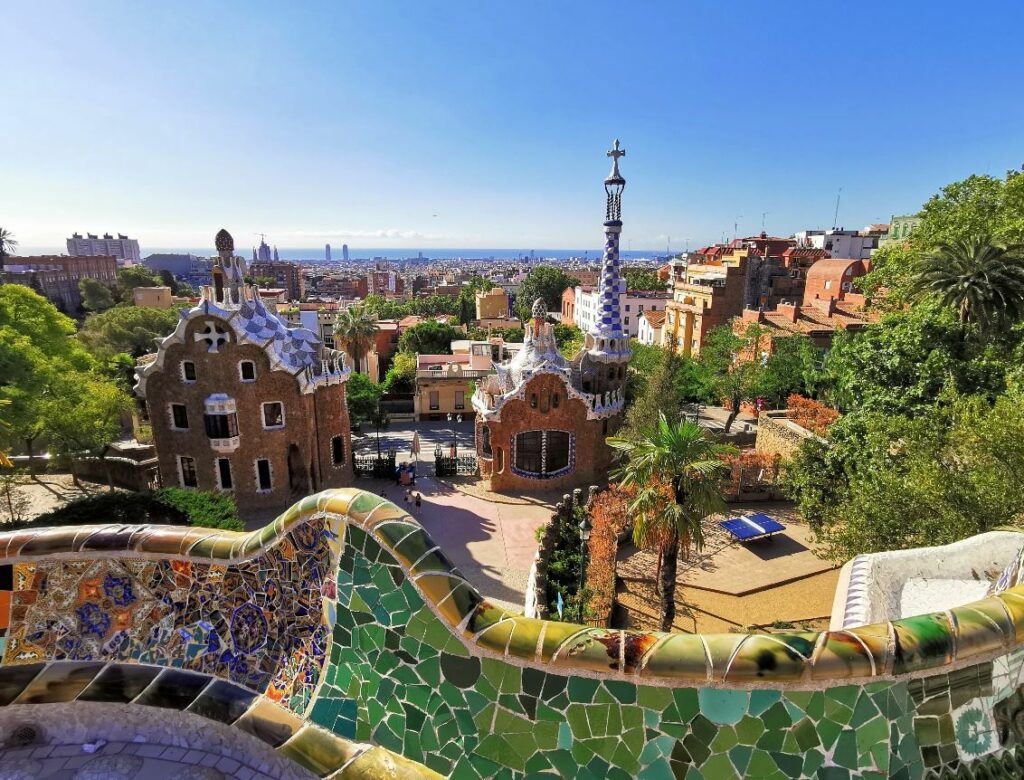
Parc Güell, Barcelona.
Casa Batlló: Exploring the architectural essence of Gaudí in a modernist icon
The Casa Batlló, designed by Antoni Gaudí, is another magnificent example of his architectural brilliance. This modernist residence is striking with its undulating facade and its organic details. Gaudí used a combination of glazed ceramics, glass fragments and wrought iron to create a unique and captivating appearance. The house interior is equally impressive, with curvilinear floors and walls and an abundance of colours and textures. Each element of the Casa Batlló is a work of art in itself, reflecting Gaudí’s daring and creative vision.
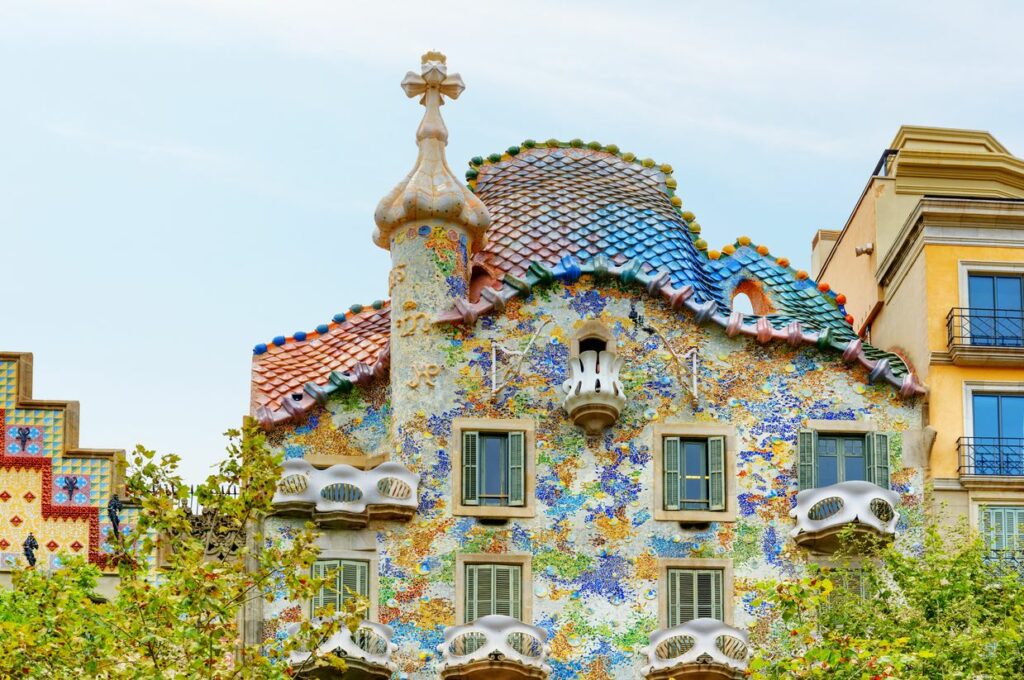
Casa Batlló, Barcelona
Sagrada Familia: Gaudí’s masterpiece that brings architecture to new heights
If there’s one masterpiece that personifies Gaudí’s legacy, it is the Sagrada Familia. This impressive basilica has undeniably become the emblem of Barcelona. It is easily one of the most well-known buildings in the world. Gaudí took on the project in 1883 and dedicated much of his life to this work up until his death. His vision was to create a unique temple, inspired by nature and replete with religious symbolism. Despite the fact that Gaudí was unable to complete the work, he bequeathed an architectural legacy that still remains under construction today. The Sagrada Familia is an extraordinary fusion of organic shapes, parabolic arches, and colourful stained-glass windows. The whole is completed with ornamental details that defy gravity.
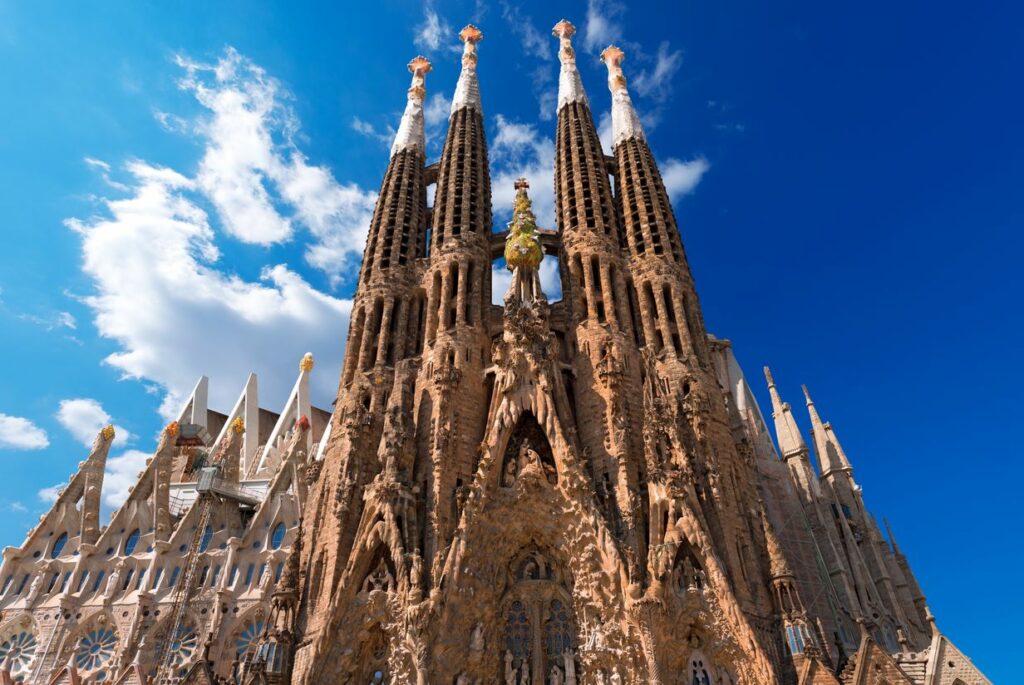
La Sagrada Familia, Barcelona
Gaudí and his innovative architectural materials
Gaudí’s style is also characterised by the unusual materials used and his experiments with new construction techniques. For example, instead of traditional materials like brick or stone, Gaudí used ceramic tiles, glass, wrought iron and reinforced concrete. What’s more, he introduced innovative techniques like the catenary, a curved structured that distributes weight equally, and trencadís.
The trencadís technique consists of using fragments of ceramic or glass to create mosaics adorning facades, walls and decorative elements. This affords considerable creative liberty, with organic shapes and a vibrant colour palette. The Trencadís not only embellishes structures, it also adds texture and a unique artistic touch. Furthermore, it is a durable and weather-resistant method, making it a sustainable and practical choice. Gaudí’s contribution with trencadís has inspired generations of architects and remains a key element in the field of construction.
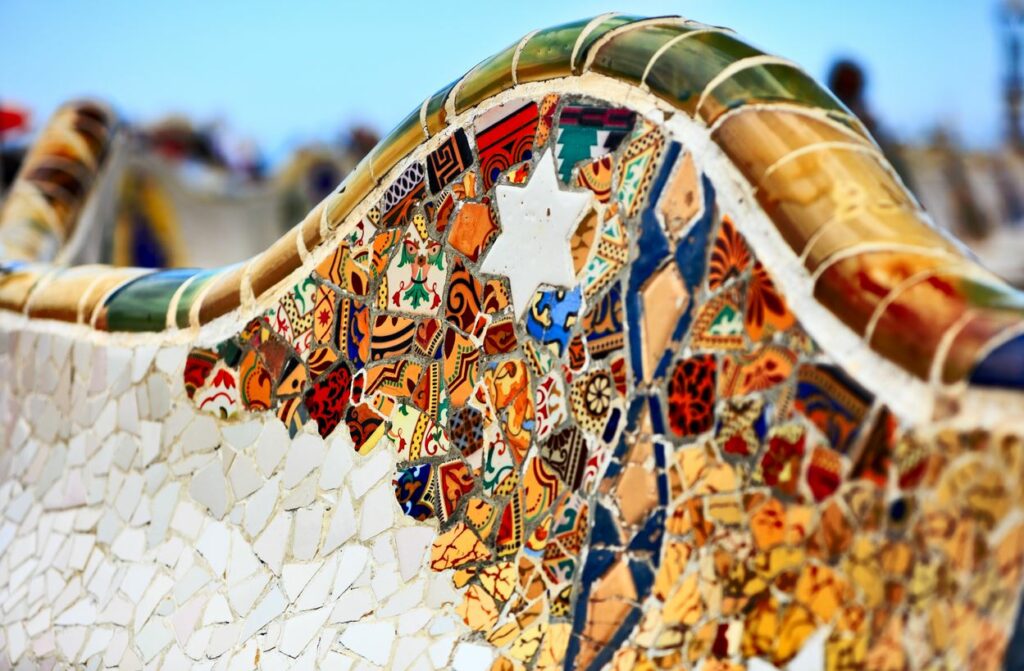
Gaudí’s influence in modern architecture
Antonio Gaudí’s influence on contemporary architecture extends far beyond his revolutionary approach. His legacy lies in the way he integrated nature in architectural design. Consequently, his vision still resonates today as a greater connection is sought between the built and the natural environments.
Furthermore, Gaudí’s structural and artistic approach has inspired contemporary architects to explore new architectural forms and expressions. His curvilinear structures, the play of light and shadow, and his attention to detail are all reflected in contemporary designs. Accordingly, these seek to create unique and captivating spatial experiences.
Here are a few key examples:
Guggenheim Museum, Bilbao: Designed by the architect Frank Gehry, this iconic building presents a fluid, sculptural structure, reminiscent of Gaudí’s organic shapes. Gehry was inspired by Gaudí’s freedom of expression and constructive innovation. The result is a building that redefines the architectural aesthetic.
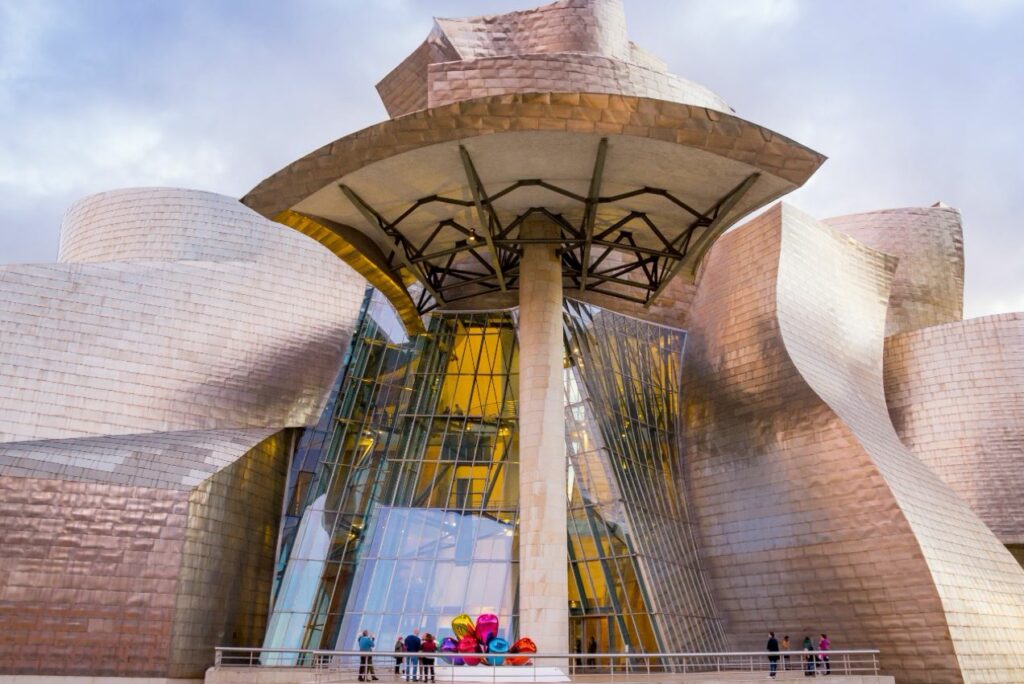
Museo Guggenheim, Bilbao
Casa da Música, Porto: Designed by the Dutch architect Rem Koolhaas, this concert hall reflects Gaudí’s influence in its sculptural and expressive approach. The arrangement of volumes and the use of unusual materials and textures evoke the daring and creativity that characterised Gaudí’s style.
Torre Agbar, Barcelona: Designed by the architect Jean Nouvel, this office tower presents a façade with a glass skin in shifting tones, reminiscent of the colourful nature of Gaudí’s work. Nouvel incorporates the play of colours and lights to create a dynamic and unique visual experience.
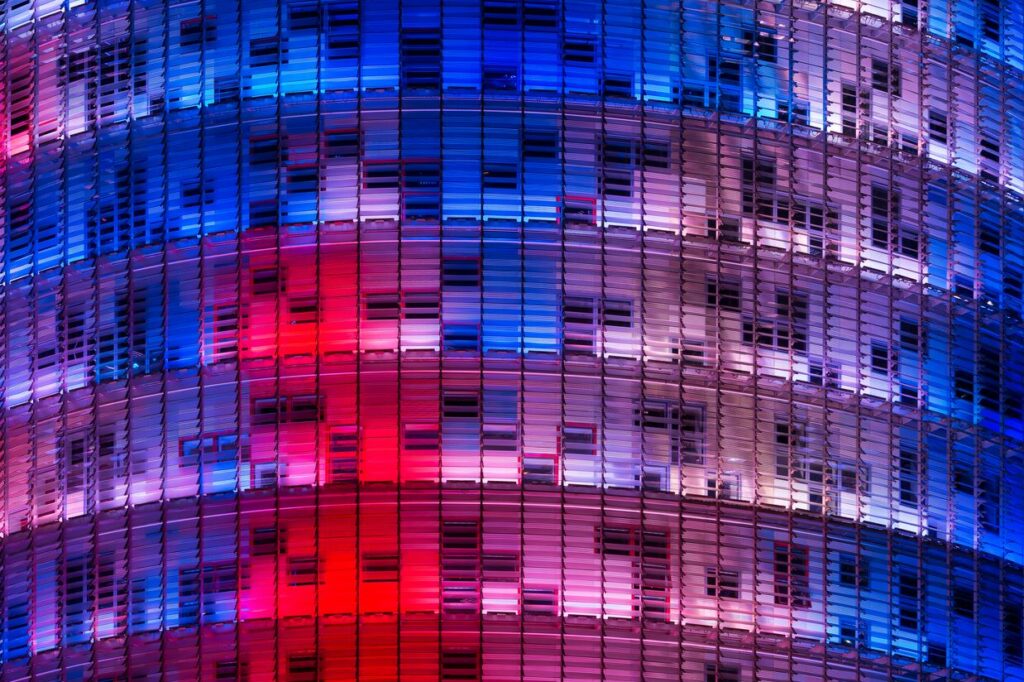
Torre Agbar, Barcelona
Today, Gaudí’s work remains a living reference and source of innovation in 21st-century architecture.

